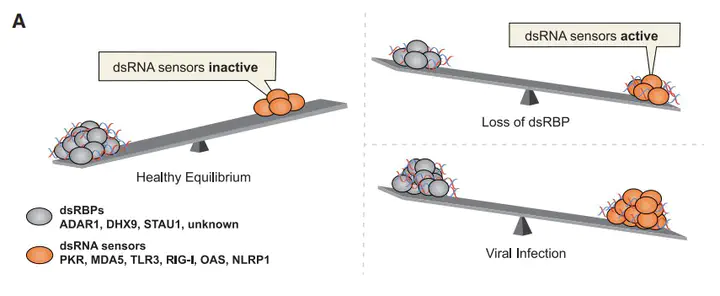 Image credit: Molecular Cell
Image credit: Molecular Cell
Abstract
The ability to sense and respond to infection is essential for life. Viral infection produces double-stranded RNAs (dsRNAs) that are sensed by proteins that recognize the structure of dsRNA. This structure-based recognition of viral dsRNA allows dsRNA sensors to recognize infection by many viruses, but it comes at a cost—the dsRNA sensors cannot always distinguish between “self” and “nonself” dsRNAs. “Self” RNAs often contain dsRNA regions, and not surprisingly, mechanisms have evolved to prevent aberrant activation of dsRNA sensors by “self” RNA. Here, we review current knowledge about the life of endogenous dsRNAs in mammals—the biosynthesis and processing of dsRNAs, the proteins they encounter, and their ultimate degradation. We highlight mechanisms that evolved to prevent aberrant dsRNA sensor activation and the importance of competition in the regulation of dsRNA sensors and other dsRNA-binding proteins.